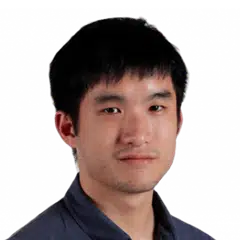Ramping up automation at Changi Airport a priority for next 3 to 5 years: CAAS director
Sign up now: Get ST's newsletters delivered to your inbox

An Auto-Dolly baggage vehicle next to a Singapore Airlines plane on the tarmac at Changi Airport.
PHOTO: AURRIGO
Follow topic:
SINGAPORE - A trial of driverless baggage tractors
By April, three TractEasy baggage tractors being tested at Terminal 3 will be allowed to move around without a safety driver – the first time the tractors will be truly unmanned. This is after more than a year of assessments during live flight operations.
Separately, a different set of driverless baggage trailers from British transport technology firm Aurrigo is also undergoing a proof-of-concept trial that could transform how airside operations are conducted.
In late 2022, Changi Airport became the first in the world to test the vehicles’ ability to autonomously load and unload baggage containers at the aircraft stand, which is a designated area where a plane is parked.
These are positive steps, but the airport needs to make a big leap towards actually implementing such technologies at scale, said Ms Angela Ng, the Civil Aviation Authority of Singapore’s (CAAS) director of aviation industry, on Wednesday.
Going forward, this will be the priority for CAAS and Changi Airport Group (CAG) in the next three to five years, she told Inter-Airport South-East Asia, a three-day aviation trade conference held at the Sands Expo and Convention Centre.
Ms Ng said airside operations at Changi are labour-intensive, hence a significant step needs to be taken to reduce the reliance on manpower.
She also had an eye on Terminal 5, which is expected to serve 50 million passengers a year
The sheer size of the terminal means more workers will be required and technology will be needed so that operations can start at a higher level of productivity, Ms Ng added, noting that the design of T5 will factor in space for different types of automation.
She said CAG and CAAS have made heavy investments in automation and innovation over the past two years, and the pandemic also provided an opportunity to accelerate and intensify trials while passenger terminals were closed due to low traffic.
This was the case with Aurrigo’s Auto-Dolly baggage vehicle and its Auto-DollyTug variant, which is designed to tow up to four traditional, unpowered luggage dollies.
These vehicles were trialled first at Terminal 4, which was closed due to Covid-19. After T4 reopened in September 2022, the trial was shifted to Terminal 2 as the northern wing is still closed for upgrading.
“There is less traffic over at T2, so we can do more advanced manoeuvres and more testing,” Aurrigo chief executive David Keene told The Straits Times.
The trial, which is funded in part by CAAS through its Aviation Development Fund, started in early 2020 with simulations of the airport’s operations.
The first Aurrigo vehicle landed in Singapore in February 2022, with the second following a few months after.
The vehicles, which are both fully electric and use Lidar (light detection and ranging) sensors to operate autonomously, had to undergo stringent safety and operational awareness tests before they were allowed onto the tarmac, Mr Keene said.
In all, there were 380 different tests used to assess the vehicles before they got the clearance to go on trial. For instance, the vehicles had to show they could negotiate road crossings and stop when pedestrians were detected.
In the first phase of the trial, the Auto-Dolly and Auto-DollyTug then demonstrated their ability to travel autonomously along busy airside roadways and inside the baggage handling area.
Phase two, which is ongoing, tests their ability to operate safely next to aircraft and other ground service equipment.
As a precaution, a safety operator must be present with the vehicles at all times. The next step will be to remove this requirement.
“The airport environment is complex and every step that you take has to be safe,” Mr Keene said.
“The confidence level is high, but there is still work to do. The next stages are really important because they will start to look at how we do with live flights.”
Meanwhile, the trial of the TractEasy baggage tractors is at a more advanced stage and the three vehicles developed by airport ground support equipment manufacturer TLD and autonomous vehicle firm EasyMile have already clocked more than 2,000km at Changi.

The autonomous tractor, developed by airport ground support equipment manufacturer TLD and autonomous vehicle firm EasyMile, during a preview at Changi Airport on August 13, 2021.
PHOTO: ST FILE
Mr Amaury Papillault, Asia-Pacific sales director at Smart Airport Systems, TLD’s sister company, said there are no plans to increase the current fleet yet but there is a desire to eventually scale up.
He said there is still some reluctance to accept autonomous vehicles, and this could be due to the fear that jobs will be taken away.
“That isn’t the case. There is a shortage of manpower, and we are also bringing in additional skills for workers,” he added.
Mr Keene said autonomous vehicles are increasingly viable as the cost of Lidar sensors has come down significantly. In 2016, each sensor cost US$80,000 (S$108,000), but they are now US$2,500 a piece and have 20 times the performance.
The Auto-Dolly has also been able to operate in fairly heavy rain here without much issue.
Mr Keene added: “In Singapore, if there is a chance of a lightning strike at the airport, personnel are not allowed to go onto the apron. If you have got a robot doing that job, then you can continue even in heavy storm conditions.”
Autonomous vehicles will also allow planners and designers to make airports of the future more efficient, he said. “One day we’ll wake up, and the whole airport will be completely automated. That will be a very interesting day.”


